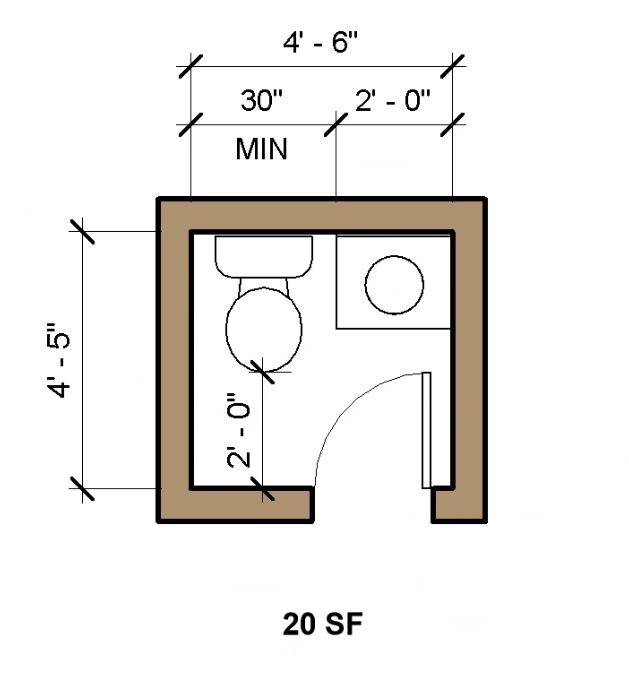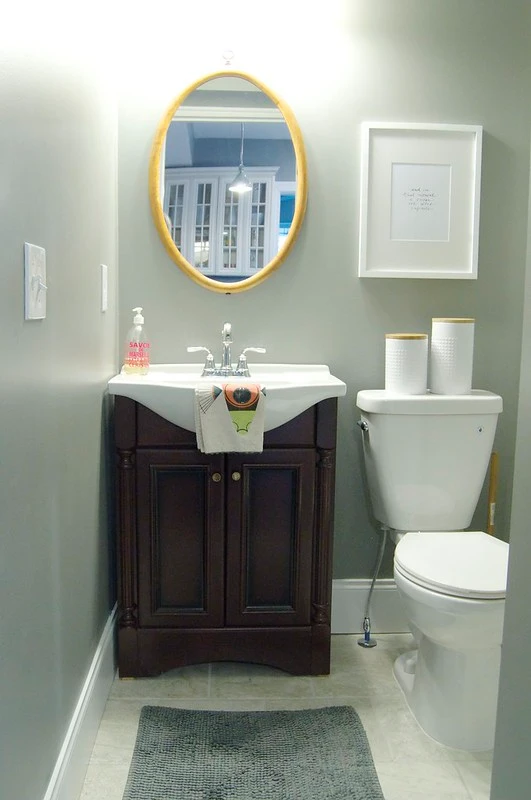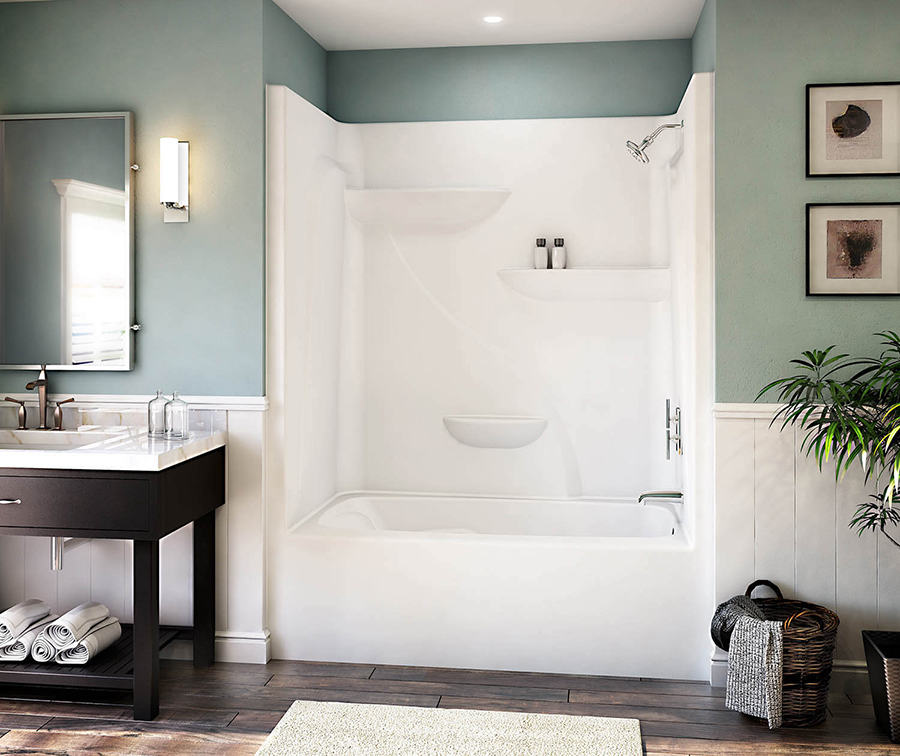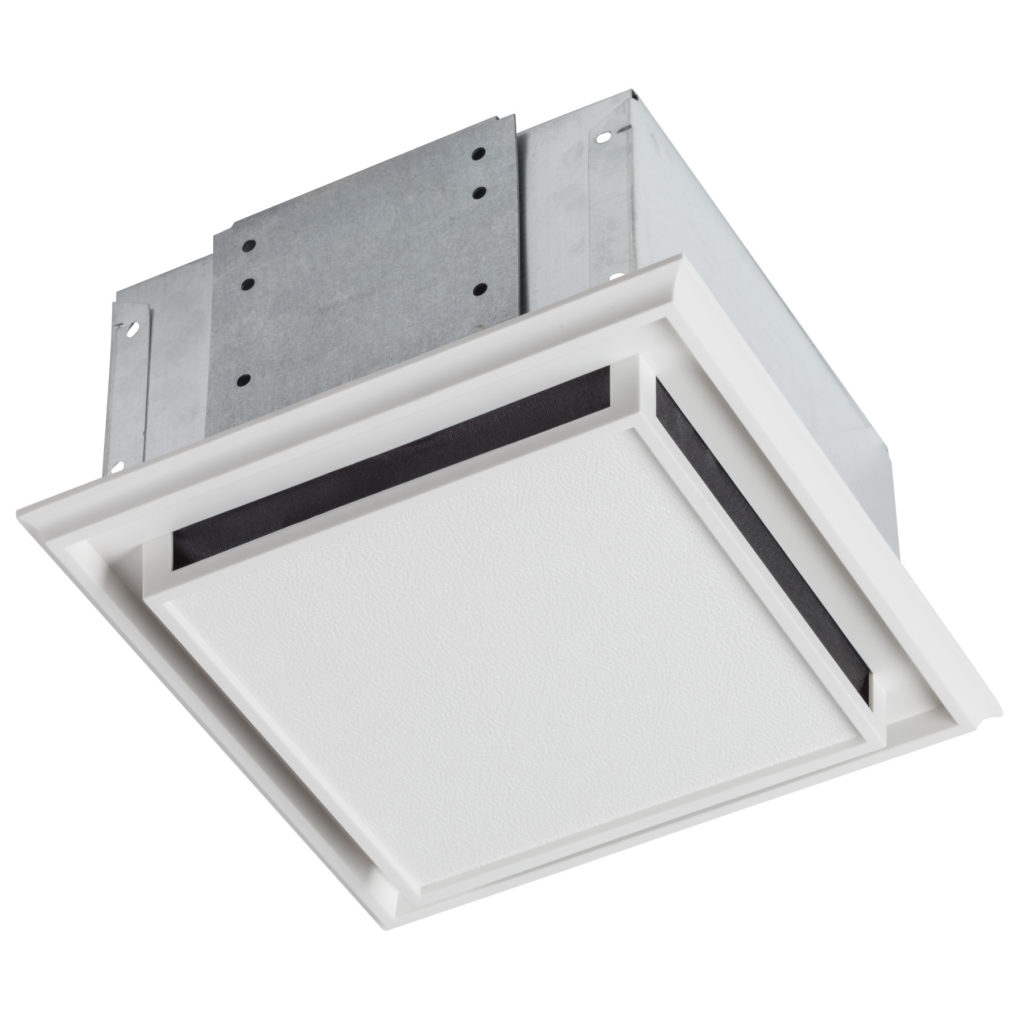Are you designing a home and wondering what to consider for your powder room? Perhaps you’re remodeling and want some ideas regarding your half bath. Getting ready to meet with a designer? This blog post will help you think of everything you need to consider.
What is a powder room?
A powder room, also known as a half-bathroom or guest bathroom, is a small bathroom that you will often find near the entrance or on the main level of a house or apartment. It’s a space that is used by guests and visitors to refresh themselves. Usually, the powder room has two of the four main components of that a bathroom will have i.e., toilet and sink.
The origins of the powder room go back to the late 19th century when indoor plumbing became more common in middle- and upper-class homes. At the time, women were wearing long dresses and corsets, which made it tough to use the bathroom without help. To solve this problem, powder rooms were created as a private space for women to freshen up, apply makeup, and adjust their clothing.
The name “powder room” comes from the fact that women would use these private spaces to apply powder to their faces.
Today, the powder room serves as a convenient and practical addition to any home or public space. It offers guests a private and comfortable space to use the restroom, wash their hands, and freshen up their appearance, all without having to go into the private areas of the house.
It typically contains a toilet, a sink, and a mirror, allowing guests to use the restroom and freshen up their appearance.
Design Consideration
Planning the design and layout of a powder room is an important part of creating a functional and stylish space. Here are a few key considerations to keep in mind.
1. Location
A powder room is typically placed in a convenient and easily accessible area, adjacent to spaces where guests are likely to spend their time. Near the entrance of a home, on the main level, adjacent to or near the living and dining areas, are all good examples.
This placement allows guests to easily access the restroom. In some cases, the powder room may also be located near the kitchen or entertainment areas, as these are areas where guests may spend a significant amount of time.
Because 1/2 baths are small, they can take advantage of tight or underutilized space. For example, a half bath can often be located under a stair.
2. Needs of the space
The minimum space needed for a powder room is typically around 20 square feet (1.8 square meters). This allows for the installation of a toilet, sink, and possibly a small countertop or storage cabinet. However, to ensure that the space feels comfortable and not cramped, it is recommended to aim for a slightly larger space, such as 30 to 35 square feet (2.8 to 3.3 square meters).
More on layouts below.


3. Plumbing
A powder room requires both hot and cold-water supply lines and a drain for the sink and toilet. Depending on the location of the powder room, it may be necessary to install a pump to move wastewater to the main sewer line (in a basement, for example).
- Sink: The sink can be mounted on a pedestal or attached to a vanity with storage.
- Toilet: A toilet in a powder room is required, with a water supply line and a waste drain that connects to the home’s sewer or septic system.
- Plumbing fixtures: Other plumbing fixtures that may be included in a powder room include a faucet for the sink, a drain trap, and a shut-off valve for each fixture.
- Plumbing vent: A plumbing vent is necessary to allow the drainage system to function properly. This vent prevents sewer gases from entering the home and helps to equalize pressure in the drainage system and most often vents through the roof.
- Water pressure: Adequate water pressure is necessary for the sink and toilet to function properly. A plumber can determine whether the existing water supply lines are sufficient or if upgrades are needed.
4. Electrical
The electrical needs of a powder room will depend on the specific features and equipment installed in the space, as well as the electrical code requirements of the local area. However, some common electrical needs for a powder room include:
- Outlets: Powder rooms should have at least one GFCI (ground fault circuit interrupter) outlet that is located within 3 feet of the sink basin. Additional outlets may be required depending on the size of the space and the location of any other electrical equipment (think heated towel racks, heated toilet seats, curling irons, etc).
- Light fixtures: Powder rooms should have a minimum of one light fixture installed, which can be controlled by a switch located near the entrance to the room. The placement of lighting fixtures can play a significant role in the overall functionality and comfort of the powder room. Lighting should be positioned in a way that provides ample illumination for guests to see themselves in the mirror and move around the space comfortably. Depending on the size and layout of the space, additional lighting may be needed.
- Switches: A switch should be installed to control the lighting in the powder room. If there are additional features such as an exhaust fan or other electrical equipment, additional switches may be necessary.
- Dedicated circuits: At least one dedicated circuit will be needed for the bathroom, but maybe more based on your local building code.
5. Ventilation
Powder rooms should be equipped with a ventilation system to remove moisture and odors from the space. This can be achieved through the installation of an exhaust fan (which needs to be vented to the exterior of the home to prevent the accumulation of moisture) or a window.
According to IRC, the openable area to the outdoors shall be not less than 4 percent of the floor area being ventilated, but be sure to check your local building codes.
6. Heating
Depending on the climate and location of the home, a powder room may require heating to maintain a comfortable temperature. This can be achieved through the installation of a baseboard heater, a wall heater, or an electric radiant heating system.
If a heater is required, it will likely be part of the overall house heating system, but there are some techniques that you might choose to include unique to bathrooms. You might use towel warmers or add radiant heat in just that room, for example.
7. Storage
While a powder room is typically a small space, it is important to consider the storage needs of guests. A small countertop or storage cabinet can be added to provide additional functionality and storage for items such as hand towels, soap, and other toiletries.
8. Acoustic Separation
It’s always a good practice to keep sound from entering and exiting a bathroom, and a powder room is no exception. Make sure to add acoustic batts between the wall studs.
Layout Options
The layout of a powder room is an important factor to consider when designing a functional and comfortable space for guests to use. Here are some key factors to consider when planning the layout of a powder room.
1. Door placement
The location of the door should allow for easy access to the restroom, without obstructing movement in other areas of the home. It should also be positioned in a way that allows for privacy and does not immediately reveal the toilet when entering the room.
2. Traffic flow
The layout of the powder room should take into account the movement of people within the home. For example, if the powder room is located near a main entrance or hallway, it should be designed in a way that does not obstruct traffic flow, but is accessible and easily found by guests.
3. Plan the fixtures and their placement
The placement of fixtures such as the sink and toilet should be carefully planned to ensure comfortable use and adequate clearance.
- Toilet: The toilet is usually a standard or compact size with a tank that is either exposed or hidden behind a wall and is no more than 30 inches deep. You can choose from a standard round bowl of 27” or an elongated bowl which is 3” deeper than the standard bowl front to back making it 30”in depth. A minimum of 21 inches (per the UPC) or 24″ (per the IRC) of clear floor space should be provided in front of the toilet and should have 15” minimum of unobstructed space on either side of its centerline, for a total clear width of 30”.
- Sink: The sink in a powder room is typically a small pedestal sink or small vanity with limited counter space. In general, a minimum of 30 inches of clear floor space should be provided in front of the sink.
- Door: The door should be able to swing freely and provide enough clearance for users to enter and exit the space comfortably. Typically, a 30″ door is adequate, while larger sizes may be more comfortable. 36″ doors should be provided if you’re planning for aging-in-place. Doors are typically a minimum of 80″ high.
Floor Plan Examples

Aesthetics
How you want your powder room is really up to you, but here are a few guidelines that I find applies to most projects.
- Color scheme: The color scheme of the powder room should complement the rest of the home, while also giving a cohesive and polished look within the space itself. It is important to choose colors that are both stylish and timeless, as the powder room decor is likely to remain in place for some time.
- Choice of fixtures: The fixtures you choose for your powder room will play a big role in the overall design and functionality of the space. When selecting fixtures, consider the style of the space and the needs of the users. For example, a sleek and modern powder room may feature a wall-mounted toilet and a pedestal sink, while a more traditional powder room may include a classic porcelain sink and a decorative mirror.
- Selection of Lighting: Lighting is an important consideration in any powder room design. You want to ensure that the space is well-lit and welcoming, but also that the lighting is functional. You may want to consider a combination of overhead lighting and task lighting, such as sconces near the mirror. Dimmer switches can also be a great addition, allowing you to adjust the lighting to fit the mood or time of day.
- Choose the Flooring and Wall Coverings: When choosing floor and wall coverings for a powder room, it is important to balance functionality, durability, style, and budget to create a space that is both beautiful and practical. While choosing floor and wall coverings for a powder room, there are a few key factors to consider:
- Durability: Since powder rooms are high-traffic areas, the materials used for the floors and walls must be durable and able to withstand daily wear and tear. Ceramic or porcelain tiles, for example, are great options for floors and walls since they are waterproof, easy to clean, and long-lasting.
- Style: The choice of floor and wall covering should complement the overall design and aesthetic of the powder room. The coverings should contribute to the desired mood, whether it is modern, traditional, rustic, or any other style.
- Maintenance: It is important to choose materials that are easy to clean and maintain, especially in a room like a powder room that sees frequent use. Non-porous surfaces, like glazed ceramic or porcelain tiles, are easy to clean and resist stains.
- Slip-resistance: Since the floors in a powder room are not likely to get wet, it can happen, so choose a flooring material that is slip-resistant to avoid any potential accidents. Textured or matte-finished tiles are good options as they offer more traction.
- Budget: The cost of the materials used for the floors and walls is another important factor to consider. It is important to choose coverings that fit within the budget while still meeting the other requirements mentioned above. There are many options available at different price points, so it is possible to find a solution that fits within the budget.
Consider the Décor
Finally, consider the décor of the powder room. This can include items such as artwork, decorative mirrors, and accessories like towels and soap dispensers. When choosing décor, the below points should be considered for the overall style of the space and the needs of the users.
- Style: First and foremost, the decor chosen should be able to reflect the overall style and aesthetic of the space. For example, if the rest of the home has traditional decor, the powder room should have a similar style. Similarly, if the home has a modern or minimalist design, the powder room should follow suit.
- Materials: The materials used in the powder room should be chosen with care to ensure they are both stylish and durable. For example, high-quality fixtures and finishes can add a luxurious touch to the space, while also standing up to frequent use.
- Accessories: Finally, accessories such as artwork, towels, and decorative objects can help tie the entire decor of the powder room together. These should be selected to ensure they complement the rest of the decor and add to the overall elegance and sophistication of the space.
Final Thoughts
When planning the design and layout of a powder room, it’s important to consider the needs of the users, the layout and placement of fixtures, the selection of appropriate fixtures, the lighting, flooring and wall coverings, and the décor.
It’s also important to consider the infrastructure requirements, including plumbing, electrical, and ventilation, as well as any other specific needs of the space. By taking these factors into account, you can create a functional and stylish powder room that meets the needs of users and enhances the overall look and feel of your home.




